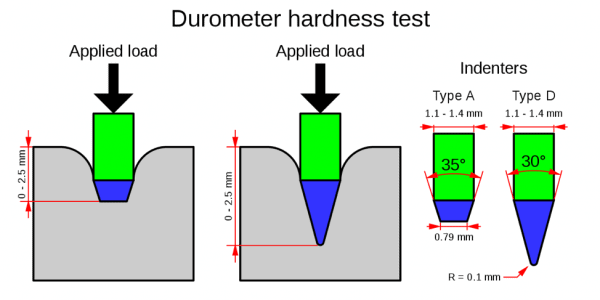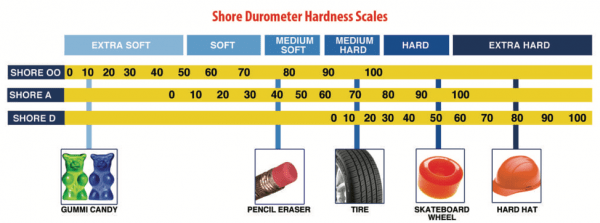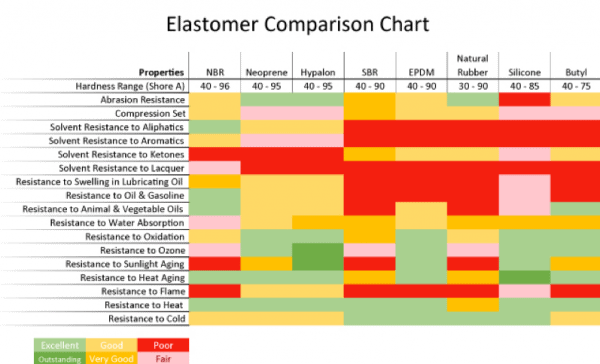What is a Durometer and How Does it Affect Which Materials You Select?
A durometer is an instrument for measuring the hardness of a material; typically plastics, rubbers, and other elastomers. The test involves bringing a probe or foot into contact with the material at a specified rate, load, and time and the values are reported on a scale.

Higher numbers indicate harder materials while lower numbers indicate softer, more flexible materials as can be seen in the chart below. The scale was developed by Alfred Ferdinand Shore in the 1920’s. He developed a device for measuring hardness although he was not the first to do so.

So What Does This Mean for Material Selection?
The first question to ask is “what is my application and what must I accomplish?” Let’s say you need a setting block to support the weight of an insulated glass unit in a storefront window. You’d want something robust to support that weight over time. In that case, if you look at the Shore A scale, you’d want something in the 70 range that would be analogous to the tire example seen in the chart.
If on the other hand, you’re looking for a conformable gasket material to seal two lightweight metal surfaces from air, moisture, and dust, you’d need something much softer and conformable and you’d likely be in the 10-30 range on the scale.
The important thing to understand is that Shore hardness by itself won’t tell you the best material choice. You need to look at durometer in conjunction with other properties so you develop a more complete understanding of expected performance.
What Other Properties Are Important?
- Thickness – it’s important to understand the gaps that might need to be filled and choose the correct thickness; too thin and you leave gaps for air and water intrusion, too thick and you’re paying for material you don’t need and may be harder to handle.
- Density – elastomeric materials like foams are typically defined by density expressed in pounds per cubic foot or kilograms per cubic meter. Higher density foams are typically more robust and durable but not as conformable.
- Force to Compress – this is the force required to compress the foam or cellular rubber 30% and gives us an indication of the force needed to generate a seal.
- Compression Force Deflection – this is the force a foam exerts back in its’ compressed state. The higher the value, the higher the load that can be supported while rebounding back to the load source to create a seal.
- Compression Set – this property helps us to understand seal integrity or resiliency and measures the permanent deformation after it has been compressed between plates for a specified time and temperature. Higher values can indicate that the material can be susceptible to deformation and seal integrity could be compromised.
- Resistance – elastomeric materials are often asked to perform in a variety of environments. A few of the conditions to consider are:
- Temperature- both heat and cold
- UV and ozone
- Solvents and various chemicals
- Abrasion

Contact Tom Brown, Inc for Durometer Information and Much More
Would you like to know more about selecting foams and rubber materials? Contact Tom Brown, Inc. today!

